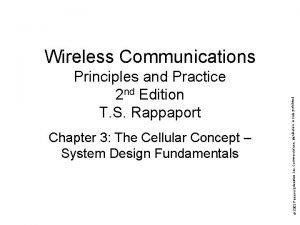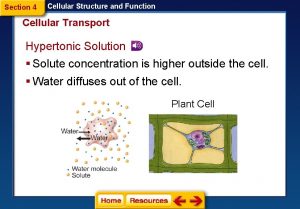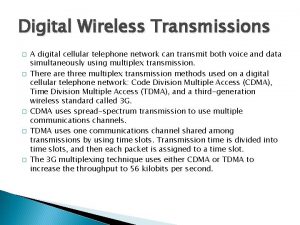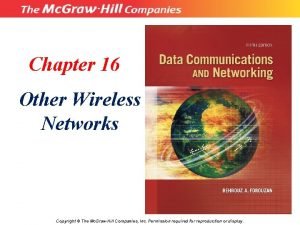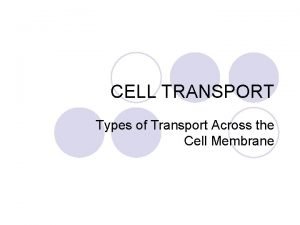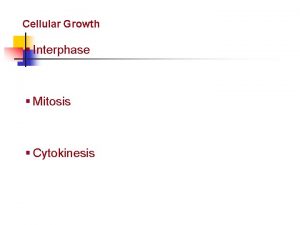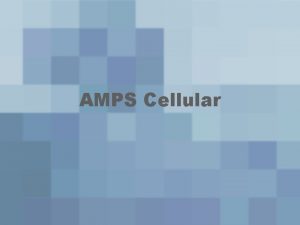Where Things Roam Uncovering Cellular Io TM 2






















- Slides: 22

Where Things Roam: Uncovering Cellular Io. T/M 2 M Connectivity Andra Lutu* Byungjin Jun+ Alessandro Finamore* Fabián E. Bustamante+ Diego Perino* *Telefonica Research | +Northwestern U.

Why do “things” need to “roam”? Any device that is not a smartphone people use dayto-day Cellular Io. T devices rely on mobile operators for seamless connectivity Even if they don’t move, they connect over mobile networks . . and sometimes they roam! Connected cars Connected coffee vending machines Connected point of sale (Po. S) Smart meters (e. g. , energy, gas) Wearables (e. g. , smart watches, ereaders) Io. T Verticals 2

More mobile users, more roaming Cellular networks support user mobility across operators with national or international roaming Growth on international roaming driven by – New regulation (e. g. , Roam like at Home in the EU) – Increased mobility of users and new technologies (e. g. , Vo. LTE) – Other industry trends (e. g. , Internet of Things) 3

International Roaming Operators contract with IPX providers – IPX provider provides the roaming hub function Operators/roaming partners don’t need bilateral contracts – Instead pay a service charge to the roaming hub Inter-operator tariff (IOT) between the Home MNO(HMNO) and Visited MNO (VMNO) Inter-operator tariff Service Charge HMNO Roaming hub Service Charge IPX Provider Roaming hub VMNO Inbound roamers Outbound roamers 4

Things Roaming using an M 2 M platform Inter-operator tariff Service Charge VMNO Roaming hub IPX Provider Service Charge IPX Provider Roaming hub HMNO 5

Our dataset An operational M 2 M platform – 100 K 4 G-enabled Io. T devices – 11 days in November 2018 Visited MNO: Operational network in UK – ~30 M devices (Smartphones, feature phones, and Io. T devices) – 22 days in April 2019 6

View from an Operational Mobile Network Operator How many are roaming? Non-Roamers Inbound Roamers Outbound Roamers 7

Inbound Roamers: Things or People? Device type is classified with the GSMA TAC database and the APN – GSMA DB: device manufacturer and operating systems Majority of Io. T devices are inbound roamers! Out of all inbound roamers, only 27% are people! 8

Where are devices roaming from in a MNO? Io. T devices 9

Many THINGS are roaming Why they roam? – Io. T services need a global connectivity International Carriers leverage their extensive infrastructure and deploy M 2 M platforms to support Io. T verticals – Carriers: Telefónica, Orange, Syniverse, Tata Communications … – Io. T verticals: smart meters, connected cars, health … 10

Breadth of an M 2 M platform A view from one of the largest M 2 M platforms in the world enabling 4 G/LTE devices world-wide – 77 countries and 127 VMNOs 11

Io. T devices – depend mostly on 2 G connectivity 12

Io. T devices – Less active but longer lived Not moving as much But active for longer times On average, 4 x longer 13

Io. T devices – Less traffic but much more signaling Io. T consumes little data But a lot of signaling VMNO does not profit from billing data communications 14

Moving cars and stay-at-home smart meters Smart meters and connected cars 15

Moving cars – similar to smartphones Connected cars are similar to roaming smartphones And transfer large amounts of data 16

Conclusion First characterization of roaming support for M 2 M communication – Io. T traffic patterns greatly differ from those of smartphones Io. T devices increase stresses on a visited MNO’s infrastructure – Occupy radio resources – Do NOT generate traffic that translates into revenue Identifying Io. T devices help manage the network – We propose an approach for classifying devices into M 2 M, smartphones and feature phones 17

Backup slides 18

The Roaming interconnection ecosystem Mobile Network Operator 3 Fixed Network Operators Mobile Network Operator 1 Internet Service Providers Interconnection Network Mobile Network Operator 2 IPX Provider 1 IPX Provider 2 Enterprise and Financial Services Content Provider Application Service Providers 19

Configurations for Roaming Evolved Universal Terrestrial Radio Access Network Mobile Device Other MNOs, FNOs, ISPs, ASPs MME S-GW e. Node. B R R S-GW MME HSS AAA P-GW HMNO Home-routed (1) Home-routed R R IPX Network P-GW Evolved Packet Core (EPC) e. Node. B VMNO IPX breakout Local breakout Internet (2) Local breakout (3) IPX breakout 20

High level MNO architecture 21

Roaming between operators Operators contract with IPX providers – IPX provider provides the roaming hub function Operators/roaming partners don’t need bilateral contracts – Instead pay a service charge to the roaming hub Inter-operator tariff (IOT) between the Home MNO(HMNO) and Visited MNO (VMNO) Inter-operator tariff Service Charge HMNO Service Charge IPX Provider VMNO Roaming hub Inbound roamers Outbound roamers 22
 Roam framework
Roam framework Roam research security
Roam research security Uncovering the past answer key
Uncovering the past answer key Cluskey vaults
Cluskey vaults Uncovering motives hots
Uncovering motives hots Living things grow images
Living things grow images Blue things
Blue things System design fundamentals
System design fundamentals Pr��ca projektov�� mana����r
Pr��ca projektov�� mana����r Section 4 cellular transport answer key
Section 4 cellular transport answer key Cellular energy section 2 photosynthesis answer key
Cellular energy section 2 photosynthesis answer key Phases of hair growth
Phases of hair growth A satellite used in a cellular telephone network
A satellite used in a cellular telephone network Cellular system
Cellular system Animal like protists
Animal like protists Why is cellular respiration important
Why is cellular respiration important Cellular respiration
Cellular respiration Multicellular or unicellular bacteria
Multicellular or unicellular bacteria Controlean cellular weight loss
Controlean cellular weight loss Us cellular welcome kit
Us cellular welcome kit Vascular and cellular events of acute inflammation
Vascular and cellular events of acute inflammation Cell transport
Cell transport Overview of cellular respiration
Overview of cellular respiration







